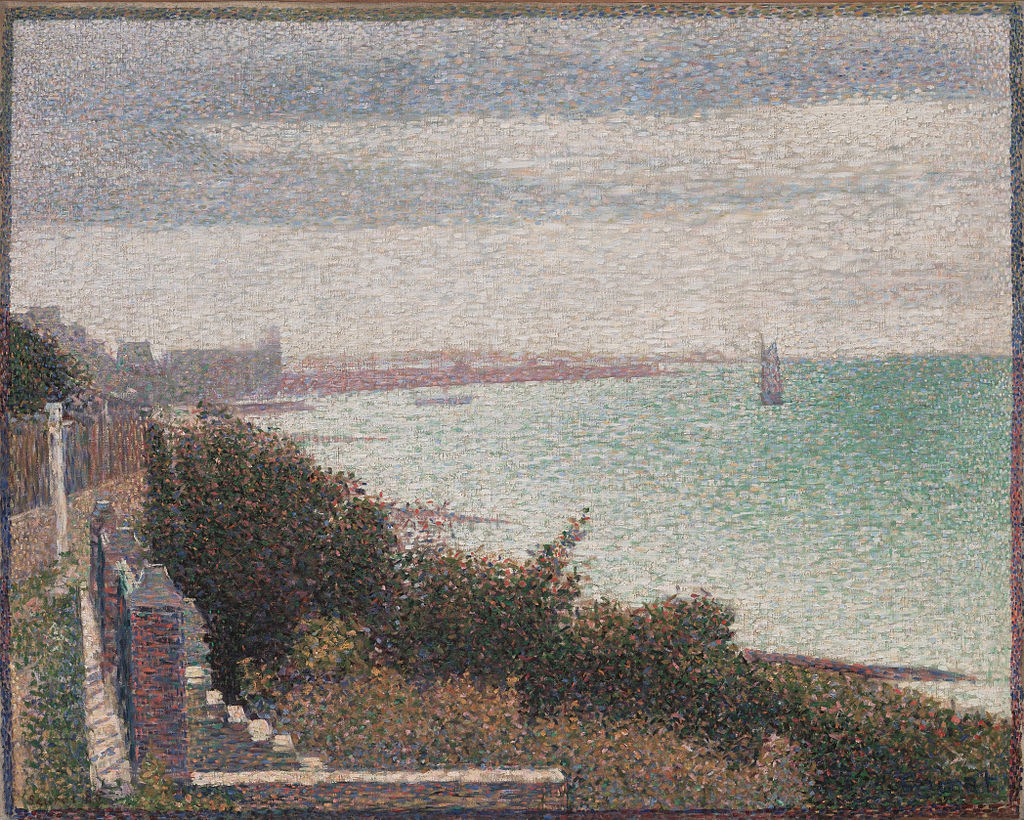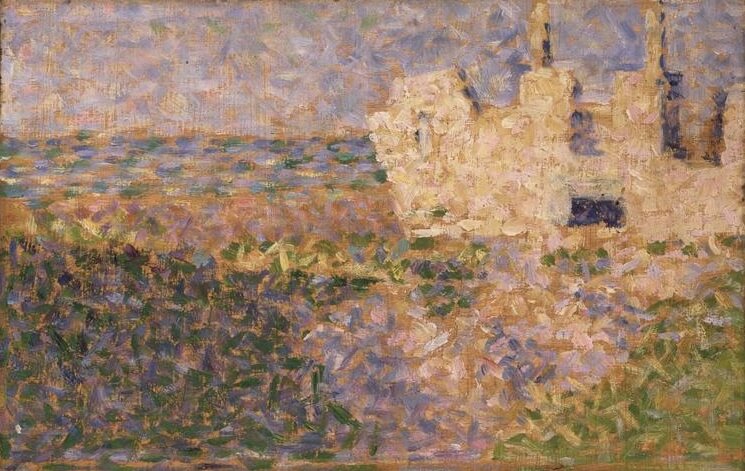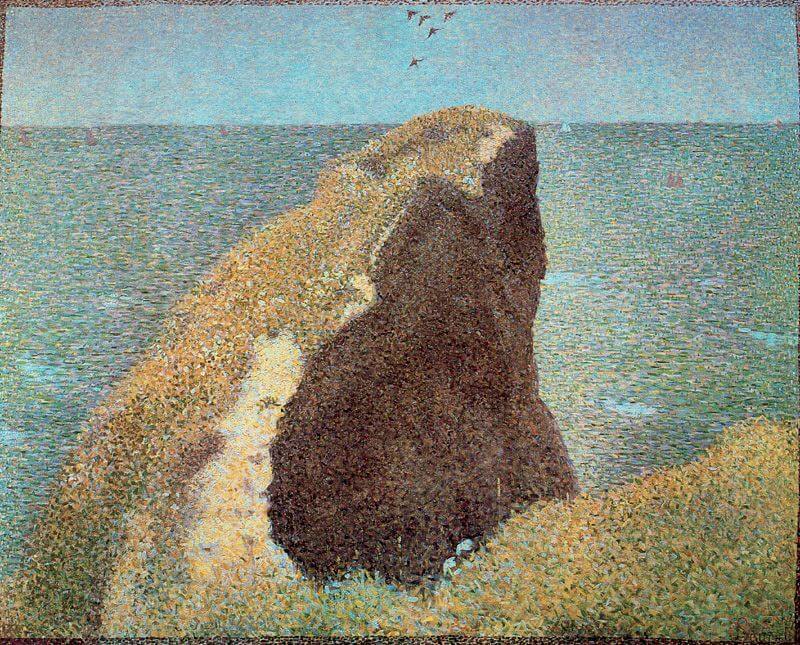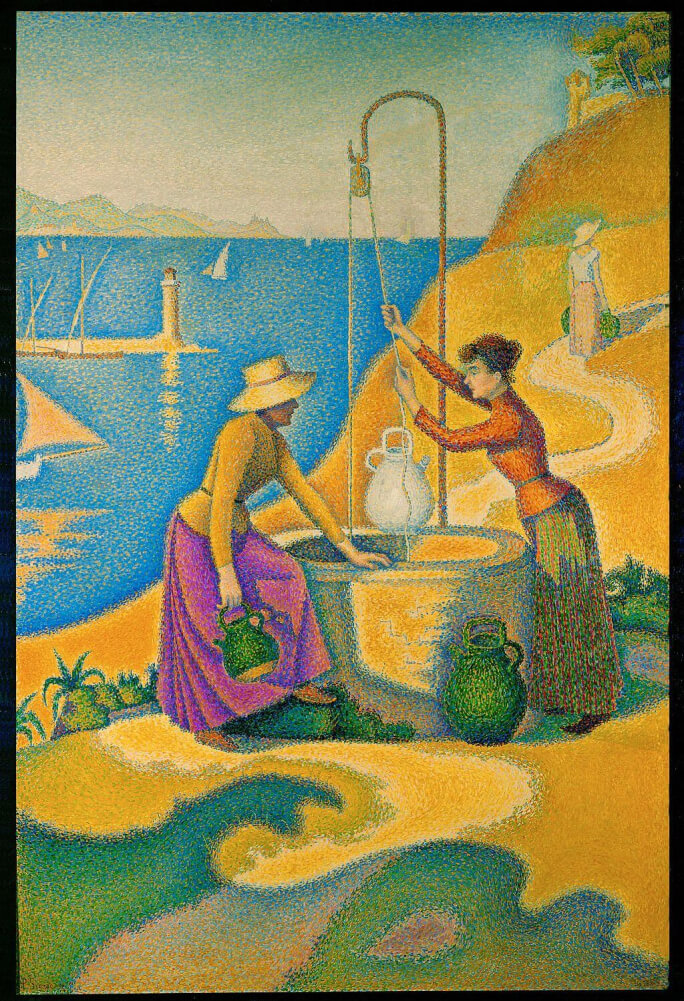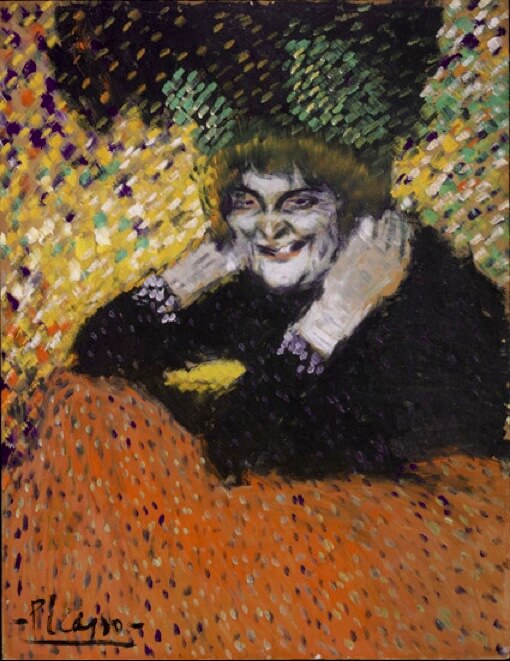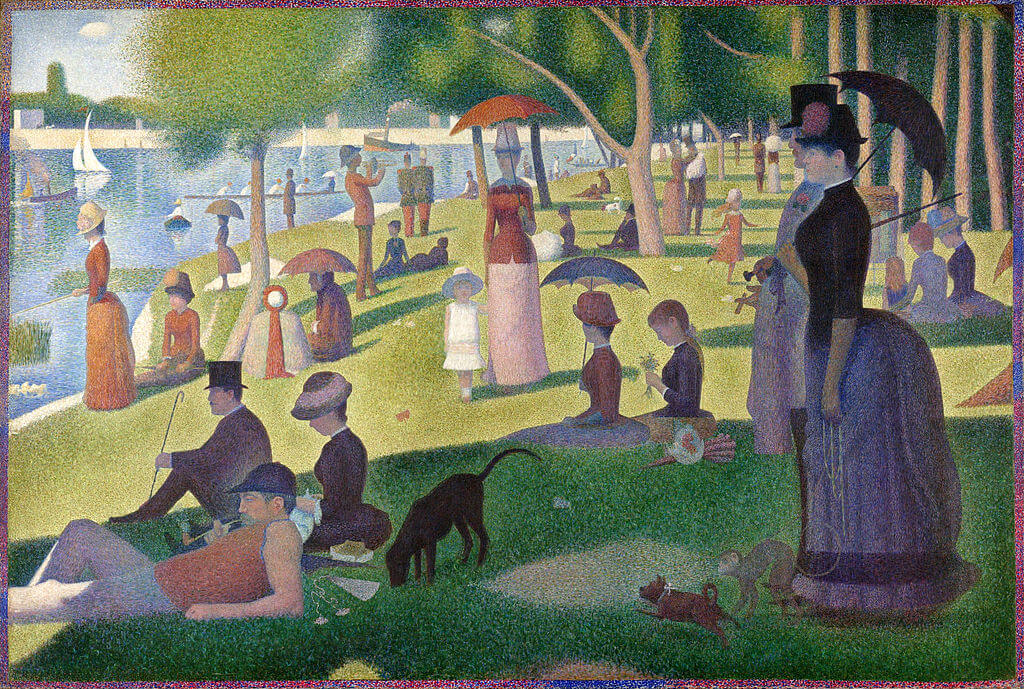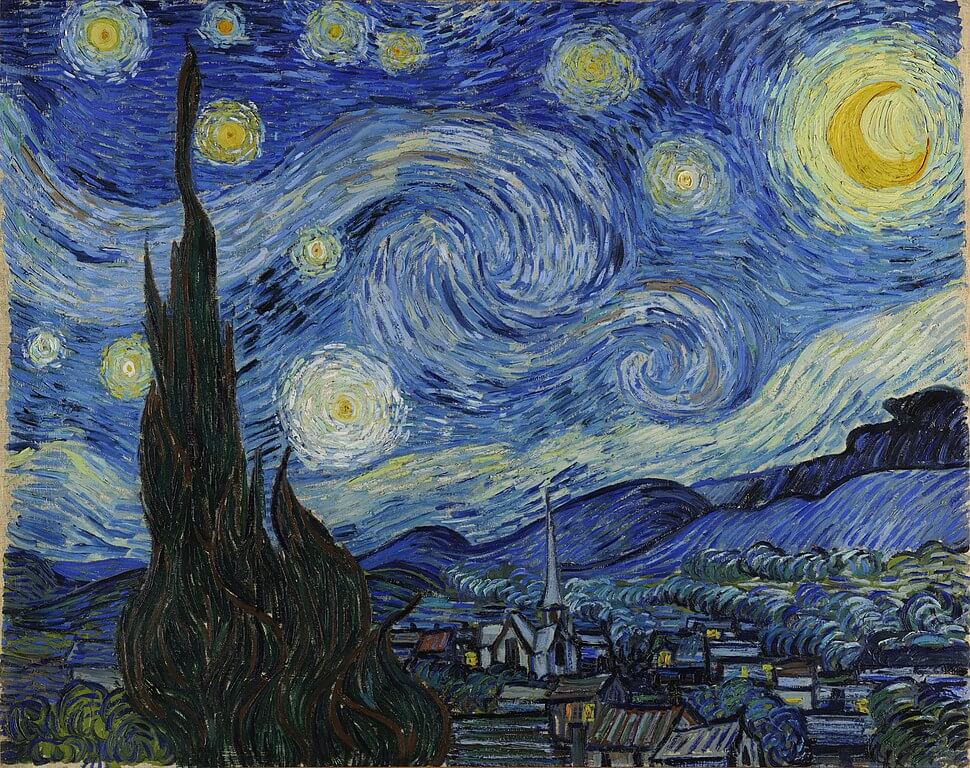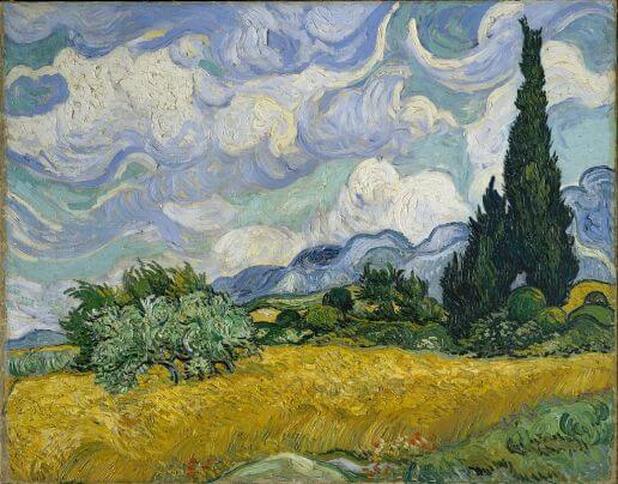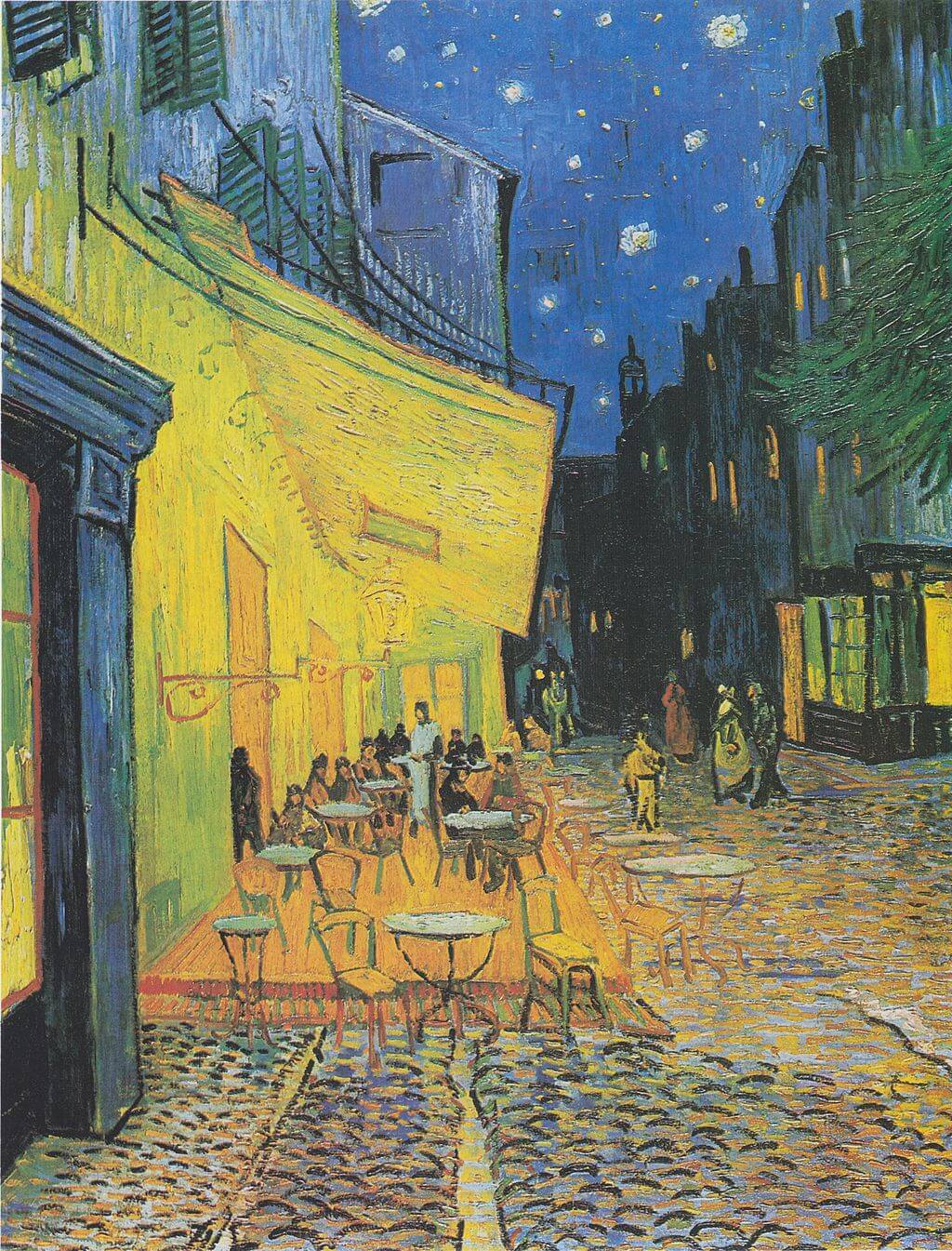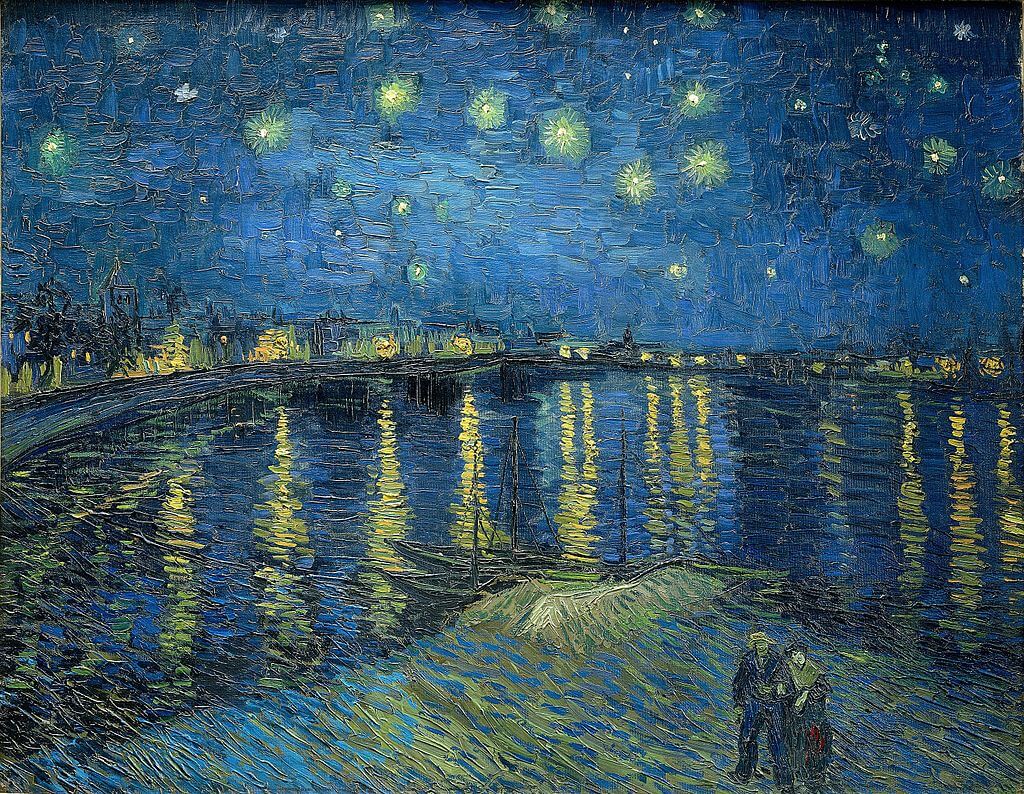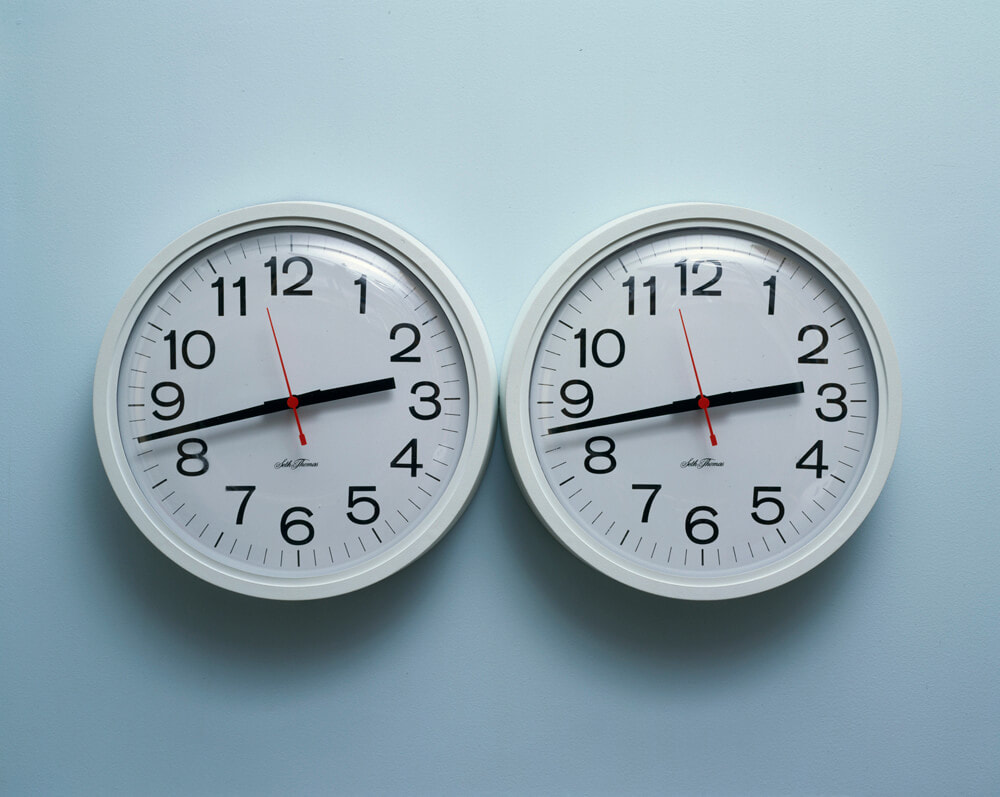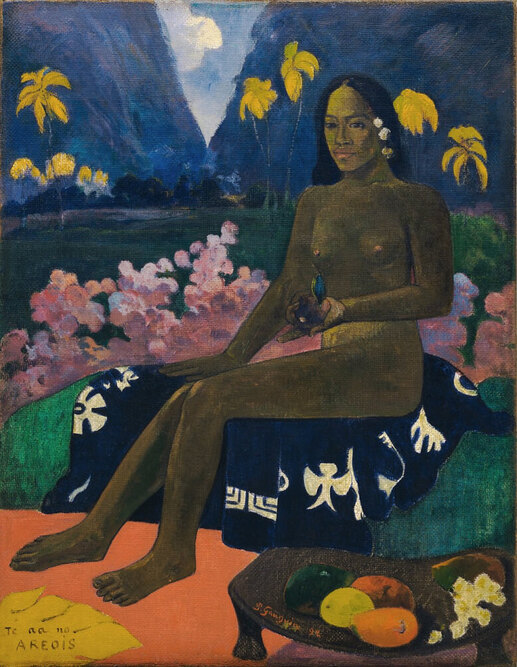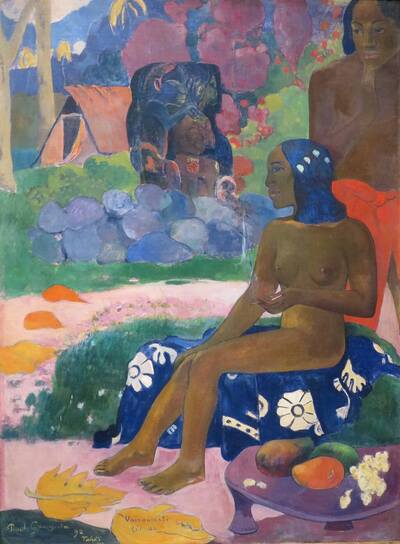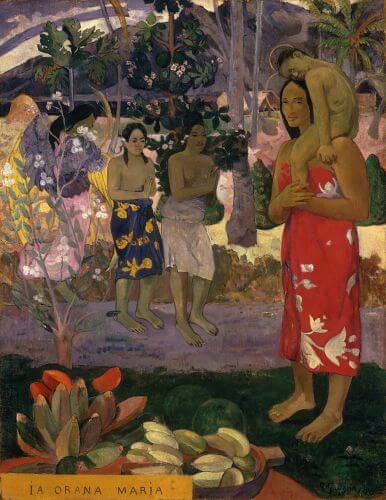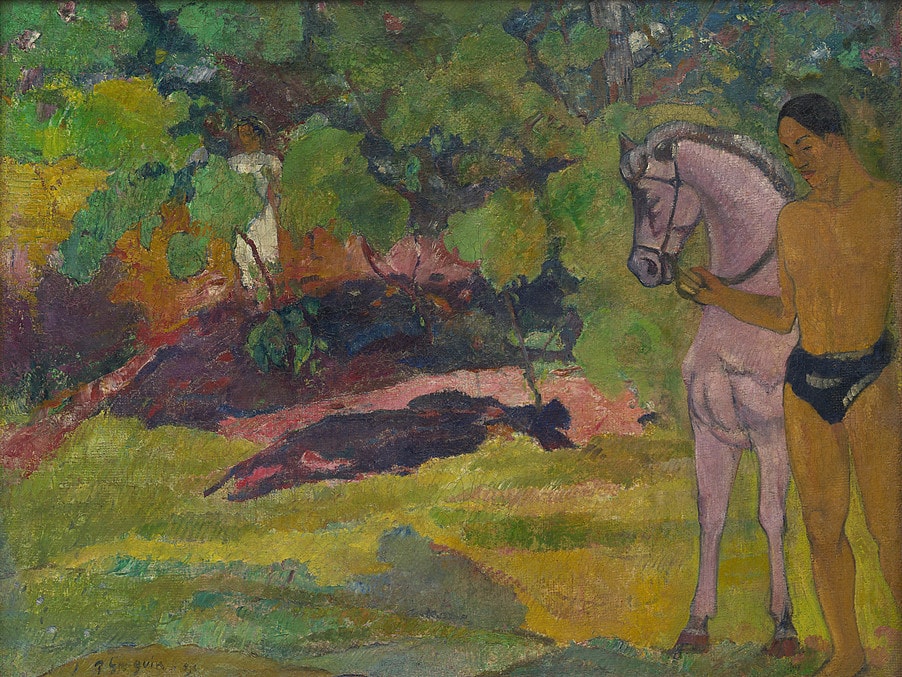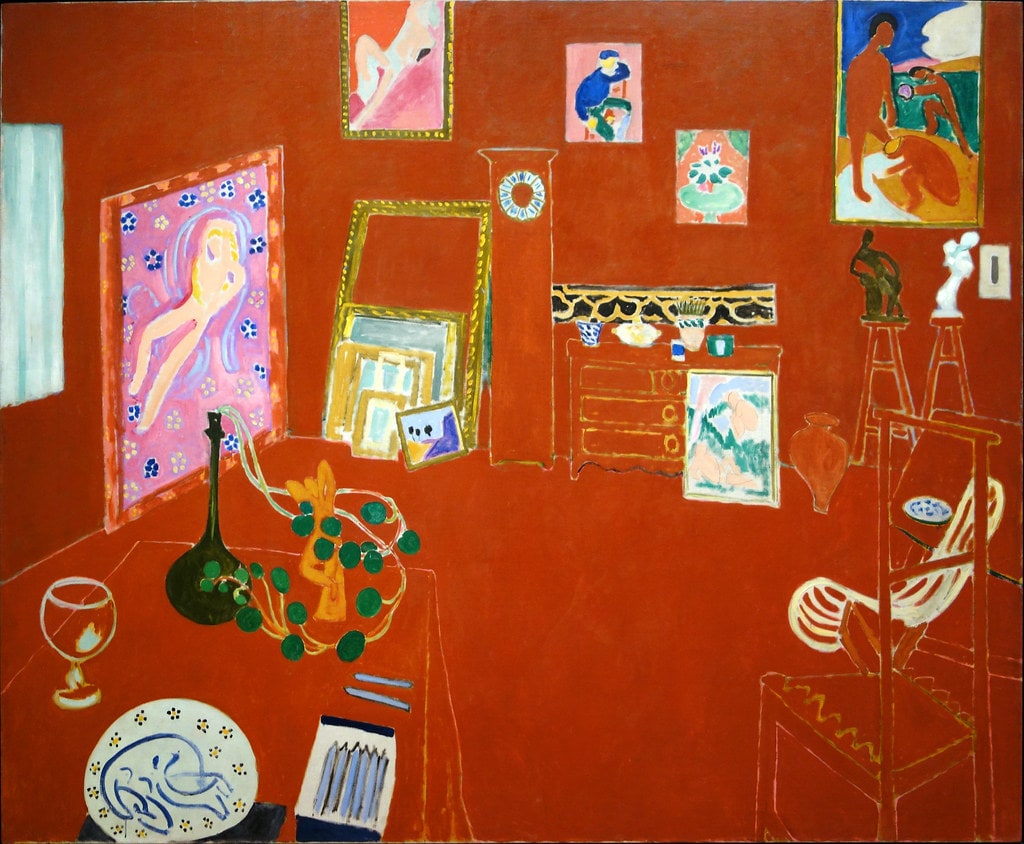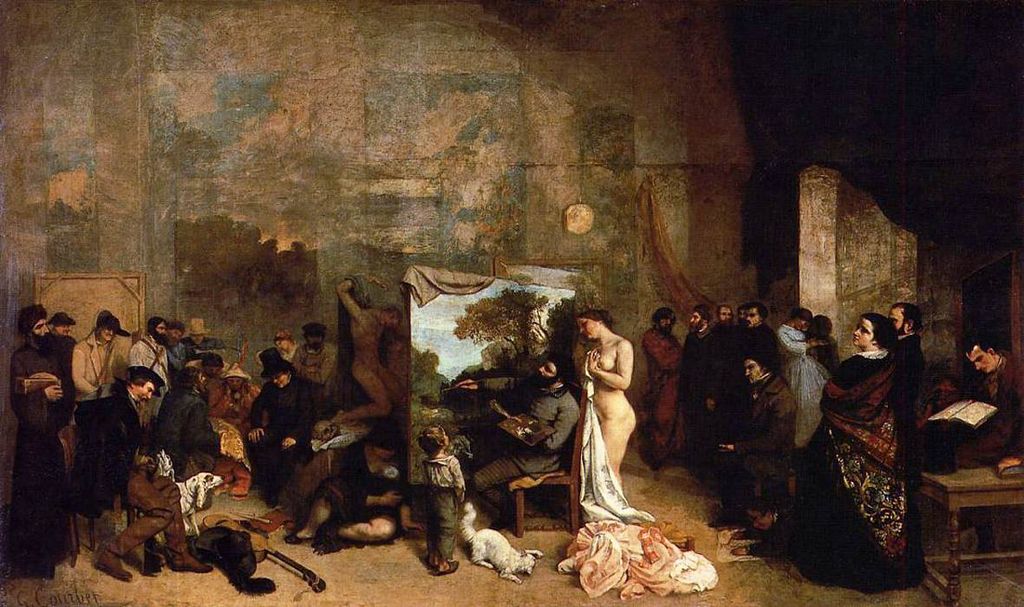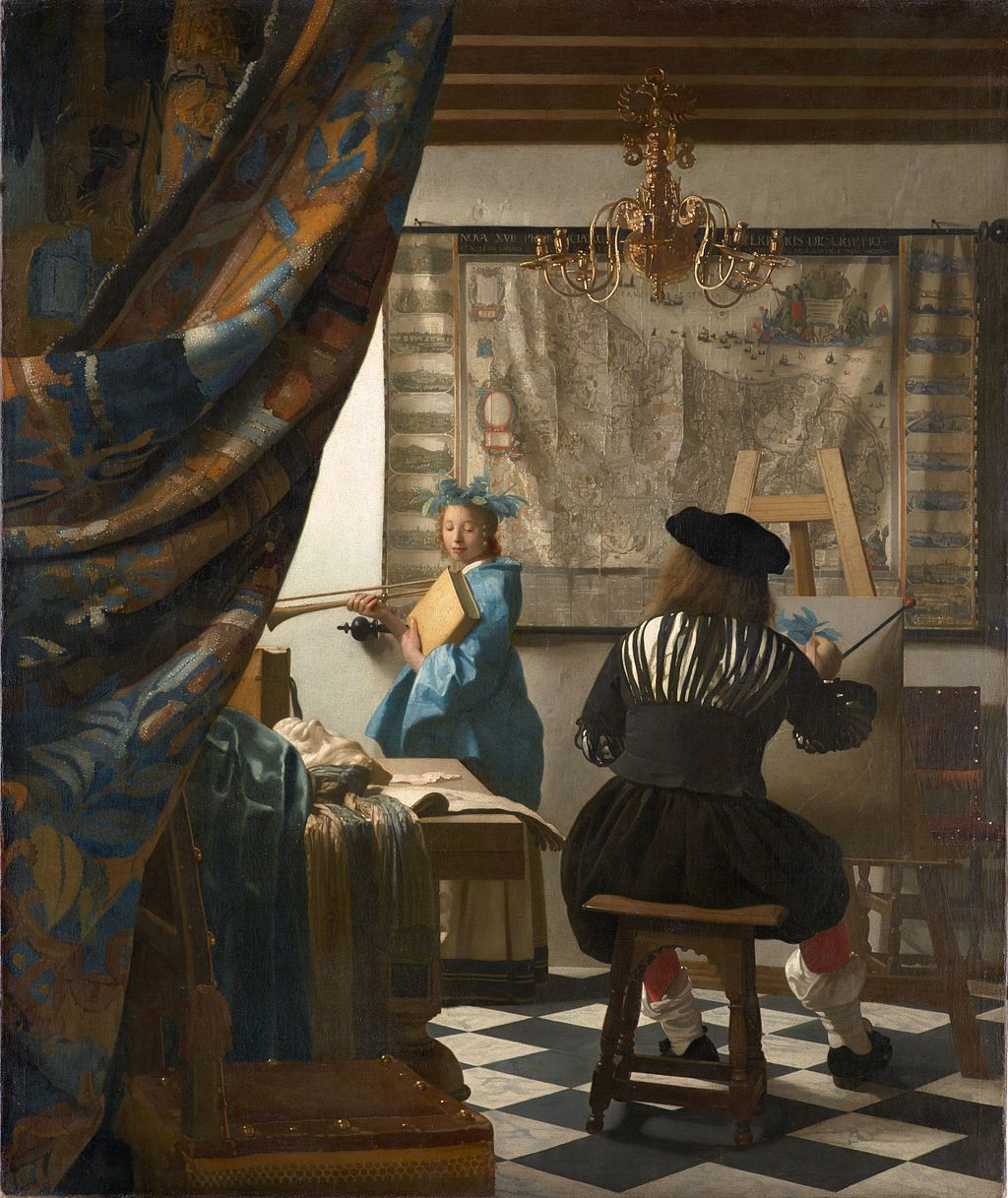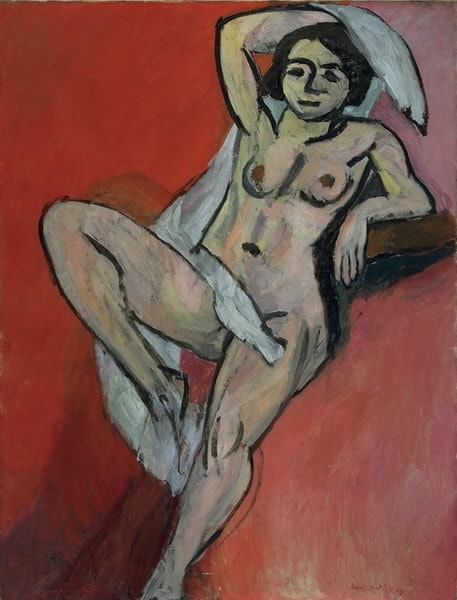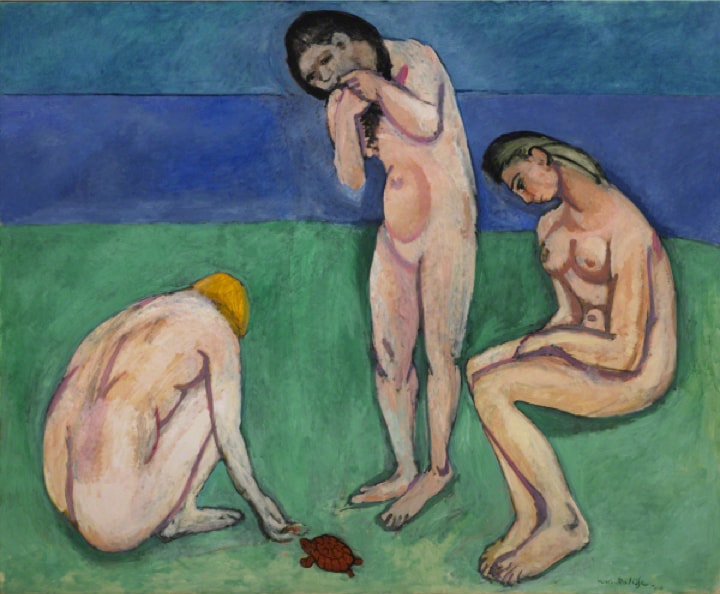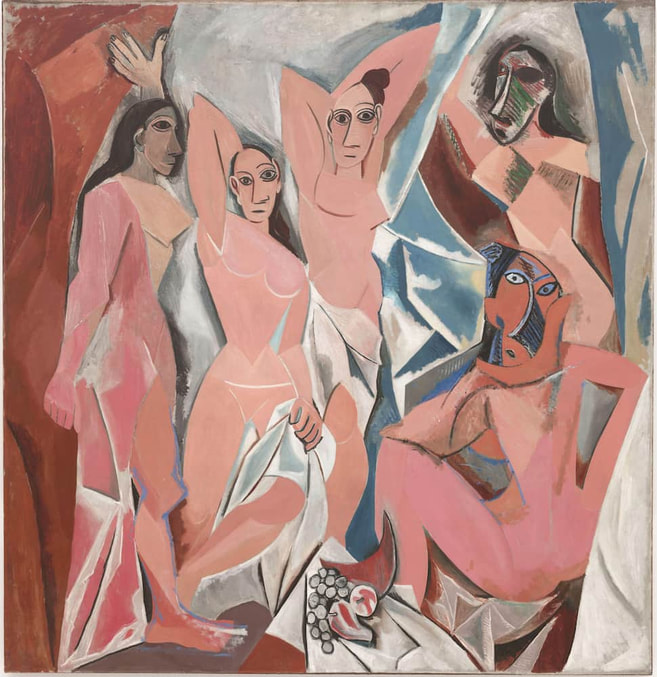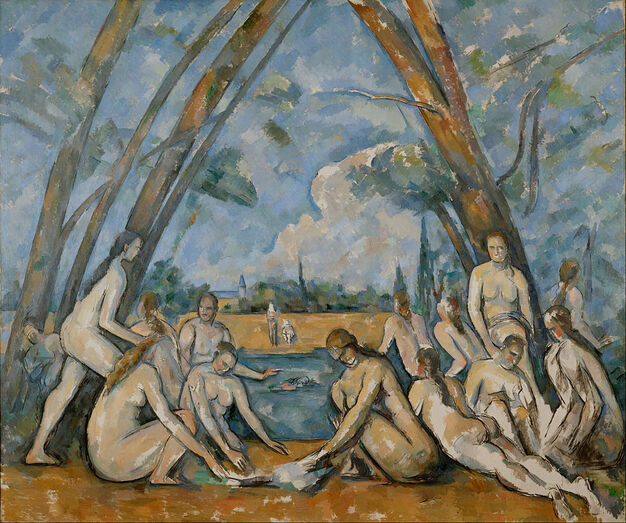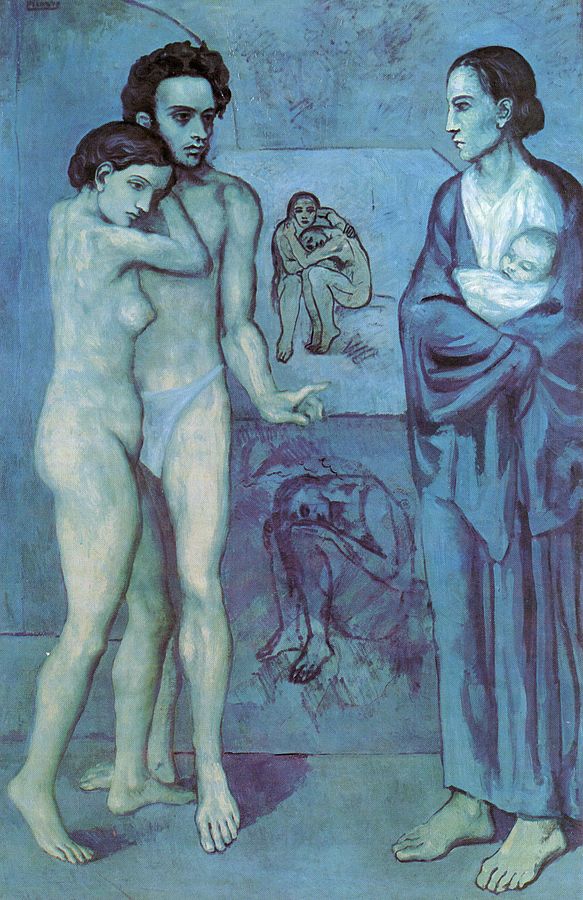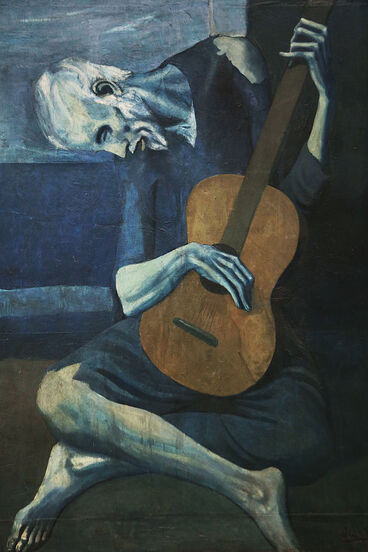|
Where? Floor 5, Gallery 1 of the Museum of Modern Art When? 1885 What do you see? The arrival of the evening in Grandcamp on the Northwest coast of France. The sky is a beautiful combination of white, silver, and gray. On the right is the Atlantic Ocean with a single sailboat. Seurat painted the sea and the sky using small horizontal brush strokes to indicate the direction in which the sea and sky are moving. In contrast, he painted the using dots of paint, which you can see very clearly when standing close to the painting. Some of the objects are very unclear from up-close. For example, look at the sailboat on the sea. However, from a distance, all the dots and small brush strokes come together, and the different elements of the painting become very clear. From a distance, we have no problem identifying a sailboat in this painting. Backstory: In 1885, Seurat spent his Summer in Grandcamp, Normandy, on the French coast. That Summer he painted several seascapes. Two examples of other works he created in Grandcamp that Summer are Ruins at Grandcamp in the Musée d’Orsay and Le Bec du Hoc, Grandcamp in Tate Modern.
Beyond Impressionism: Impressionism developed under the lead of Édouard Manet in the 1860s, and by the 1880s, Impressionism gained quite some popularity. However, among the next generation of artists, there were several innovative painters that went beyond Impressionism, usually labeled under the umbrella term Post-Impressionism.
What is Neo-Impressionism? An art movement created by Georges Seurat in 1884. Neo-Impressionism involved a scientific interpretation of colors and lines. The paint was applied in pure, unmixed dots and blocks of colors, creating a strong sense of organization. Scientific principles guided the choice of contrasting colors such that the colors interacted optically (instead of mixing the colors in the painting). This creates a special effect for the viewer. Looking at the paintings from nearby, one sees a lot of dots of pure colors. However, from a distance, these colors interact beautifully, and the painting becomes a unified whole of almost unmatched clarity. One great example of this style from 1892 is Femmes au Puits by Paul Signac in the Musée d’Orsay. A later example from 1902 is Old Woman by Pablo Picasso in the Philadelphia Museum of Art.
Who is Seurat? Georges-Pierre Seurat (1859-1891) was born and raised in Paris. He only became 31 years old and died in the midst of his career from an unknown disease. He was a Post-Impressionist painter. He can be classified even more accurately as a Neo-Impressionist painter.
Seurat received a classical art training at the traditional École des Beaux-Arts in Paris. While his painting style was far from traditional, his ideas benefited greatly from his education. He used a scientific approach to painting, whereby different colors can create different emotions and combining specific colors can create harmony in a painting. Seurat decided not to combine colors in a painting, but instead to apply the colors separately, using small dots, and let the viewer combine the colors in his/her mind. The best-known painting by Seurat is A Sunday at La Grande Jatte – 1884 in the Art Institute of Chicago.
Fun fact: Seurat completed this painting in 1885. Only three years later, he added the border of the painting. He did this to increase the brightness of the colors. This addition perfectly fits with the ideas and style of painting that Seurat used. The colors are carefully chosen to complement each other, and the contrasting colors in the border make the painting itself, and especially the sea and the sky stand out more.
Interested in a copy for yourself? Poster
0 Comments
Where? Floor 5, Gallery 1 of the Museum of Modern Art
When? June 1889 What do you see? This painting is an imaginative version of a starry night in Saint-Rémy in France where Van Gogh was staying at that time. The various elements in this painting are certainly inspired by what Van Gogh observed in reality, but he created his own ideal version of the starry night. In the painting, we can observe some trees, a village, and mountains under a night sky full of stars (or more precisely a collection of 12 celestial bodies). In the foreground, you can observe a big wavy cypress tree. The cypress is an element that comes back in multiple Van Gogh paintings, such as the Wheat Field with Cypresses in the Metropolitan Museum of Art. On the top right is a crescent moon. The brightest celestial body in the painting, just to the right of the cypress tree, is the planet Venus. The celestial bodies light up the sky (indicated by the use of white paint in the night sky). The church tower in the middle foreground is probably the Saint-Martin church in Saint-Rémy. Van Gogh, however, did not include the dome of the church in this painting. In the village surrounding the church, several houses still have their lights on. On the right side of the painting, between the village and the mountains, you can see a forest. The curvy lines used for the cypress tree and the clouds in the sky create a sense of movement in this painting. Notice also the clear contrast between the turbulent sky and the quiet life on earth. The cypress in the form of a big fire is the only element that connects the earth and sky with each other.
Backstory: The painting is created between June 16 and 18, 1889 when Van Gogh was staying in the hospital of Saint-Paul-de-Mausole at Saint-Rémy. In a letter to his brother Theo, he wrote: “This morning I saw the countryside from my window a long time before sunrise, with nothing but the morning star, which looked very big.” He mixed this view both with some other elements that he observed in the area of Saint-Rémy and his imagination to create this painting.
Van Gogh used thick broad strokes of oil paint to create this painting and it was probably created in a single day (even though the idea for this painting was already occupying his mind for over a year). If you look carefully, you can still see some pieces of the canvas in between the broad strokes of paint. Symbolism: There is some debate on whether this painting should be interpreted symbolically. One symbolic explanation for this painting centers around the cypress which connects the earth to the sky in this painting. The cypress tree is associated with cemeteries and death. In this painting, it could be the connection between life (which happens on earth) and death (which is when you go to the stars according to Van Gogh). Van Gogh wrote in one of his letters “We take death to go to a star.” Van Gogh, who would eventually commit suicide, was interested in death and he expressed some ideas that one would go to the stars after death. Other versions of the Starry Night? Van Gogh was already interested in the idea of painting a starry night in 1888 as expressed in several letters to his friends and brother. Indeed, in 1888 he painted two versions of a starry night. The first version is Café Terrace at Night which is in the Kröller-Müller Museum in The Netherlands. The second version is Starry Night over the Rhône which is in the Musée d’Orsay in Paris. However, these two paintings did not fulfill his idea of a perfect starry night. Instead of a starry night above a town, he was more interested in a starry night above a landscape and a more imaginative version of the night sky.
Who is Van Gogh? Vincent van Gogh (1853-1890) was born in Zundert in The Netherlands. At the end of his life, he created many paintings that fall under the Post-Impressionist style. Van Gogh has produced a large number of paintings during his life and most of them have been painted in the last two years of his life.
Vincent van Gogh wrote many letters during his life -- many of which to his brother Theo -- which have been saved. In these letters, he explained his ideas about painting and they form a valuable source to interpret his works. The work of Van Gogh was not really appreciated during his life, but his work has become famous after his suicide in 1890. Fun fact: While this is nowadays considered to be one of the best paintings by Vincent van Gogh, he did not seem very proud of this painting. When he wrote a letter to his brother Theo after he left Saint-Rémy, he did not mention this painting as a good one. In fact, he listed several paintings, including the Wheatfield with Cypresses, as “a little good.” About the other paintings from that period, including this painting, he writes “the rest says nothing to me.” His brother Theo seemed to agree that The Starry Night is not his best work. He was worried about the more imaginary nature of this work compared to the somewhat more realistic paintings he created before. He advised Vincent to stick to still lifes and flowers as that would have more therapeutic value for the mentally troubled Vincent.
Where: Room 208 on the second floor of the Museum of Modern Art
When: 1991 What do you see? Two identical clocks hanging on the wall, set in synchronized manner at the same start time, operating with identical batteries. The clocks touch while showing the time which is running out. Inevitably, at some point they will stop; one of them will stop ahead of the other. Part of the meaning of this work is in the title, the other part is in the action—it can represent two heartbeats. Some may interpret this that one of the heartbeats will stop before the other, leaving one of the lovers on his/her own. But the clocks can also be reset at any point and then the artwork can be interpreted as two perfect lovers who will stay together infinitely. Background: After finishing “Untitled” (Perfect Lovers), Gonzalez-Torres said: “The piece I made with two clocks was the scariest thing I have ever done.” He created this artwork during a time that his partner Ross Laylock was suffering from AIDS. The political and personal reality fueled the art of Felix Gonzalez-Torres, as he watched his partner fall victim to the unchartered territory of AIDS. Ross died in 1991. Gonzalez-Torres was born in Cuba, but after immigrating to the United States at age 11, he became an American citizen. His art can be interpreted as a reflection of both the appreciation and limitations of his rights as a U.S. citizen. It became the expression of both his personal drama and political convictions. But Gonzalez-Torres was careful to not impose a certain meaning to this artwork, allowing viewers to interpret it in their own way. AIDS epidemic: The peak of Gonzalez-Torres’ creativity coincided with the peak of the AIDS epidemic, the disease which at that time (the 80’s) was not only covered by fear and mystery, but also largely neglected by politics. The word “AIDS” was not mentioned by President Ronald Reagan until the Third International Conference on AIDS in Washington, D.C., in 1987. At that time 21 thousand people already had died from the disease which, by then, had spread to 113 countries. Other works by Gonzalez-Torres: The experience of Gonzalez-Torres’ partner suffering from AIDS, inspired Felix Gonzalez-Torres. “Untitled” (Passport) 1991, is a stack of countless sheets of plain, white paper, which the audience can take some sheets from. The stack typically gets replenished, though the exhibitor may also decide to not replenish it anymore at some point. It can be interpreted as a passport with nothing written in it, reflecting a world without borders. While Gonzalez-Torres did not specify how he wanted people to interpret his art, it makes many viewers feel a bit uncomfortable. Instead of feeling his art, the viewer is informed and moved to action. Who is Gonzalez-Torres: Felix Gonzalez-Torres (1957-1996) was an American artist. He was born in Cuba but fled his native country at the age of 11, in the turbulent year of 1968. Some of his artistic ideas can be foregrounded by his biographical experience (like being a refugee and gay), though he never intended for his works to be solely read through a biographical reading. He considered it to be extremely personal, even saying: “I can’t separate my art from my life.” Not having a studio of his own, he worked often with simple, ordinary objects turning them into sculptures or installations, breaking many conventional norms while doing that. The breakaway was mainly in the meaning given to those objects, as they acquired their new, artistic forms. It was not an easy message for viewers to digest. Legacy: Since his passing in 1996, progress has been made in the United States and other parts of the world regarding the treatment of minorities. The art of Gonzalez-Torres is a contributing factor to this progress. Together with artists like David Wojnarowicz, Essex Hemphil, and Ray Navarro, they spent their artistic lives to make a societal impact. Their art has helped museum visitors understand minorities and contemplate important societal issues.
Where? In the Museum of Modern Art, but currently not on display.
When? 1892 What do you see? A nude girl from Tahiti sits on a blue and white blanket. She is sitting in a dignified position with her back very straight, like the old Egyptians depicted people in art. She has some white flowers in her hair and in her left hand she holds a flowering mango (seed) that she seems to offer to the viewer. This flowering mango symbolizes fertility and was the sacred fruit of the Areoi society. On the bottom right is a three-legged table (called an umete in Polynesian) with more mangos in different colors. The girl is sitting against a background of pink flowers. In the background is the beautiful landscape of Tahiti which shows some mountains, water, trees, and a piece of the sky. Gauguin kept this painting relatively simple and did, for example, not include any shadows. He created a very colorful painting where the colors are not all very realistic. Backstory: This painting is also known under the Polynesian title Te Aa No Areois as can be seen in the bottom left corner. The painting was bought in 1936 by William S. Paley, a trustee, and the later president of the Museum of Modern Art. It was the first Gauguin painting acquired by the MoMA. Gauguin signed and dated the painting on the left side of the table with fruit in the foreground. The composition of the painting is similar to another Gauguin painting entitled Her Name is Vaïraümati (or Vairaumati Tei Oa) which is in the Pushkin Museum in Moscow. This painting deals with a similar theme, which is the origin of the Areoi society.
Who are the Areoi? Also referred to as the Arioi, it is a secret religious society in French Polynesia which does not exist anymore. At its origin is a myth about the god Oro who has intercourse with the most beautiful woman on earth, Vaïraümati, which results in the creation of a new race. The society had a hierarchical structure with several classes or ranks. While everyone, both men and women, could theoretically enter into each class within the Areoi, the highest classes were in practice mainly accessible for people from the higher classes of society. The highest class was reserved for priests.
Access to the society depended on your beauty, religious knowledge, recitation skills, and dancing skills. Moving up through the ranks was confirmed by increasingly large tattoos. Members of the society had sexual freedom until they married and were not allowed to get children. Most of the French Polynesian islands had their Areoi order, and they all had a place of worship and several houses in which the members met and where members of the other islands could stay. Who is Gauguin? Eugène Henri Paul Gauguin (1848-1903) was a Post-Impressionist artist from Paris. He was a self-taught painter without any formal education. He spent a large time of his youth in Peru where he developed his taste for traveling and exotic countries. In 1891, he moved to Tahiti in French Polynesia where he stayed until 1893 when he temporarily moved back to France. In 1895, he returned to Tahiti where he spent most of his time until his death in 1903. Gauguin is widely known for the idyllic and colorful paintings he made in French Polynesia. His work has had a big influence on artists such as Henri Matisse and Pablo Picasso. Other well-known works of Gauguin from his first period in French Polynesia are Hail Mary in the Metropolitan Museum of Art and In the Vanilla Grove, Man and Horse in the Guggenheim Museum in New York.
Fun fact: The girl in this painting is the Tahitian mistress/wife of Gauguin. Her name is Tehura, and she is 13 years old at the time of this painting. Soon after this painting, she was pregnant. She is depicted as Vaïraümati, the wife of the god Oro, who gave birth to a son who formed the beginning of the Areoi.
Gauguin wanted to paint the origins of this secret society which he claimed to have learned from Tehura. However, it is now assumed that Gauguin learned about this society through a travel book by Jacques-Antoine Moerenhout. In fact, Tehura was not aware at first that she was depicted as the mother of the Areoi. Interested in a copy for yourself? Poster of canvas.
Where? Room 506 on Floor 5 of the MoMA
When? 1911 What do you see? A look into the studio of Henri Matisse filled with his recent artworks scattered about the room. Among them are paintings on the walls, a stack of frames in the corner, vases, and ceramic plates. These objects seem randomly placed in the red room. Each painting, sculpture, and object is rendered in relative detail while the furniture in the room is represented with thin, almost invisible, yellow lines. Hardly present are a table, a dresser, two stools, a chair, and a grandfather clock with missing hands. This clock serves as the painting’s central axis and may suggest a disruption of time. Likewise, space is disrupted in the studio. The flatness of the red canvas is contrasted with a distorted perspective with improperly converging orthogonals and furniture that is depicted at varying angles. The curves of the plants on the table and the figures of his paintings contrasts with the rigidity of the picture frames, chairs, and the window on the far left. In this way, balance and harmony are created in the placement and color of the curated menagerie of objects in the studio. Backstory: The Red Studio, also known as L'Atelier Rouge, is part of a long-standing tradition of depicting the artist in his studio. Courbet, Velázquez, and Vermeer have all created similar paintings that show them at work in their own artistic space. But Matisse removes himself from his studio and instead represents himself with the artworks that are scattered around the room. These are all actual artworks that Matisse created. Matisse thus, untraditionally, represents himself with his own artworks. Matisse strays from tradition again by painting with reserve lines (rather than painting the entire canvas red and working on top of that layer, he leaves certain areas of the canvas unpainted and these unpainted areas form some of the lines and forms in this work). This can be seen in little gaps in paint near outlines where the bare canvas is revealed. This can be attributed to Matisse’s study of Cézanne’s works which is a departure from the Renaissance style of creating layers of oil paint.
Who is Henri Matisse? Henri Émile Benoît Matisse was born on December 31, 1869 in Le Cateau, France. When he was 22, he moved to Paris to study art. Already influenced by the Impressionists, he grew into a more abstract painter as he traveled the Mediterranean finding inspiration in the light there.
When Matisse returned from the Mediterranean, his work was exhibited alongside works by Derain and De Vlaminck, artists that were central in the formation of the Fauvist movement. While the other Fauvists received great criticism, Matisse’s reputation quickly grew. Finding identity in his Fauvist style, his works became more wild and colorful. In 1910, Matisse travelled to Spain and Morocco to study Islamic art and architecture. There, he found inspiration in patterns and incorporated detailed designs into his artworks. But just seven years later, Matisse retired to Nice and turned to a much more naturalistic style. Despite this regression, Matisse eventually returned to his abstract style in the 1930s only this time with paper cut-outs which include his Blue Nudes. Towards the end of his life, Matisse worked on the stained glass designs for the Chapel of the Rosary in Vence in the south of France. He died on November 3, 1954. Fun fact: The artworks in The Red Studio are all based on actual works by Matisse. These include Nude with a White Scarf (upper left) in the Statens Museum for Kunst in Copenhagen, Female Nude (lower right), and Bathers with a Turtle (upper right) in the St. Louis Art Museum.
Where? Floor 5, Gallery 2 of the Museum of Modern Art
When? 1907 What do you see? Five nude women in a brothel. The women are not interacting with each other. The woman on the left holds back a curtain to show the other women. The woman to her right and the woman in the middle are looking boldly at the viewer while exposing their bodies. It is unclear whether they are standing or laying down. Look, for example, at the second woman from the left. Her legs are partly crossed, she has a sheet between her legs and her arm behind her head. The woman in the middle and the two women to her left have relatively normal faces. The two women on the right wear African masks. During the time that Picasso created this painting, he was interested in African artifacts, such as African tribal masks. The woman on the bottom right has her head turned around 180 degrees to look at the viewer, while the standing woman on the right appears from behind a curtain. Picasso uses a lot of angular shapes, like triangles and diamonds, in this painting, to simplify the painting and make it quite abstract. In the foreground is a table in an impossible position to hold the bowl of fruit. In the bowl, we can recognize an apple, a pear, grapes, and a pink slice of melon. Backstory: The French title of this painting is translated as ‘The Young Women of Avignon.’ Avignon refers to a notorious street in the red light district of Barcelona, Spain. Picasso was familiar with this area as he frequented it while skipping school as a teenager and he had also lived nearby it. Picasso, however, disliked the title of this painting which was given by his friend André Salmon for an exposition in 1916 of which the painting was a part of. Picasso preferred the title ‘Mon Bordel’ which means ‘My Brothel’ or ‘Le Bordel d’Avignon’ which means ‘The Brothel of Avignon.’ Fellow artists and friends were initially shocked by this painting as the women in this painting were so ugly. Nowadays, this painting is considered to be one of the most revolutionary paintings of the 20th century, and it is one of the works that marks the beginning of Modern Art. One of the closest, earlier works related to this painting is The Large Bathers by Paul Cézanne in the Philadelphia Museum of Art, created between 1898 and 1905. This is a painting that Picasso had seen shortly before finishing Les Demoiselles d’Avignon. In 1939, the Museum of Modern Art completed a $24,000 transaction to acquire this painting.
What is Cubism? The idea behind cubism is that all forms in nature can be reduced to three solids: cube, sphere, and cone. This reduction was an idea of Paul Cézanne. Basically, the objects in a painting are analyzed, divided into pieces, and then painted in a more abstract form. Thus, realistic details like perspective and color are omitted and replaced by the three solids proposed by Cézanne.
There are different stages of cubism.
Who is Picasso? Pablo Picasso (1881-1973) was born in Malaga, Spain. In his teenage years, he moved to Barcelona, but most of his adult life he lived in France. He was an artistic talent and has created many paintings, sculptures, and poems. Picasso was an innovative artist who developed a large number of art styles. Every few years he drastically changed his art style. For example, between 1901 and 1904, he was in his Blue Period. Two great examples from that period are La Vie which is at the Cleveland Museum of Art and Old Guitarist which is at the Art Institute of Chicago. Between 1904 and 1906 was his Rose Period. In the decade after his Rose Period, he developed various forms of cubism. Together with Georges Braque, Picasso pioneered the Cubist art movement, inspired by artists such as Cézanne, Gauguin, and Toulouse-Lautrec.
Fun fact: Based on sketches by Picasso, we know that he initially planned to include two additional figures in this painting (see one of those sketches here).
|
Categories
All
|
- Home
- Blog
-
Museums
- Alte Pinakothek
- Art Institute of Chicago
- Baltimore Museum of Art
- Barber Institute of Fine Arts
- Bargello
- Barnes Foundation
- British Museum
- Church of Sant’Anastasia
- Cleveland Museum of Art
- Courtauld Institute of Art
- Detroit Institute of Arts
- Frans Hals Museum
- Galleria Borghese
- Gallerie dell'Accademia
- Getty Museum
- Guggenheim
- Hermitage Museum
- Kunsthistorisches Museum
- Kunstmuseum Basel
- Legion of Honor Museum
- Louvre
- Mauritshuis
- Metropolitan Museum of Art
- Musee d’Orsay
- Museum of Fine Arts in Boston
- Museum of Modern Art
- National Gallery in London
- National Gallery of Art
- National Museum in Poznań
- Norton Simon Museum
- Ny Carlsberg Glyptotek
- Palace of Versailles
- Palazzo Pitti
- Palazzo Vecchio
- Petit Palais
- Philadelphia Museum of Art
- Prado
- Pushkin Museum
- Ravenna Art Museum
- Rijksmuseum
- San Diego Museum of Art
- Santa Maria delle Grazie
- St. Peter's Basilica
- Städel Museum
- Statens Museum for Kunst
- Tate Britain
- Tate Modern
- Timken Museum of Art
- Uffizi
- Vatican Museums
- Wallace Collection
-
Artists
- Altdorfer
- Anguissola
- Berlin Painter
- Bosch
- Botticelli
- Boucher
- Bronzino
- Bruegel the Elder
- Brunelleschi
- Cabanel
- Caillebotte
- Canova
- Caravaggio
- Carpeaux
- Cezanne
- Cimabue
- David
- Degas
- Delacroix
- De Maria
- Donatello
- El Greco
- Fontana
- Fra Angelico
- Fragonard
- Gauguin
- Gentileschi
- Gericault
- Gonzalez-Torres
- Goya
- Hals
- Hogarth
- Hokusai
- Ingres
- Leonardo da Vinci
- Lippi, Filippo
- Longhi, Barbara
- Lorrain
- Makovsky
- Manet
- Massys
- Matisse
- Merian
- Michelangelo
- Mochi
- Modigliani
- Monet
- Panini
- Parmigianino
- Perugino
- Picasso
- Pisanello
- Raphael
- Rembrandt
- Renoir
- Reynolds
- Rivera
- Rodin
- Rubens
- Scultori
- Seurat
- Steen
- Tintoretto
- Titian
- Toulouse-Lautrec
- Turner
- Uccello
- Van der Weyden
- Van Dyck
- Van Eyck
- Van Gogh
- Van Hemessen
- Vasari
- Velazquez
- Vermeer
- Veronese
- Vigée Le Brun
-
Locations
- Books
- About Us

